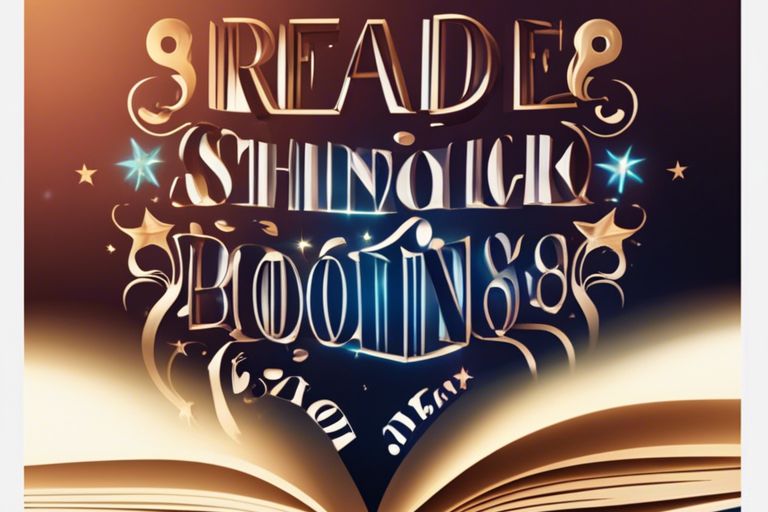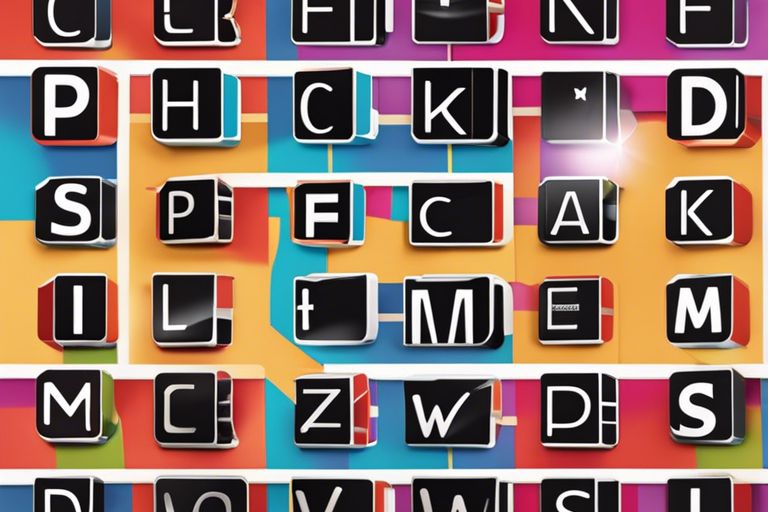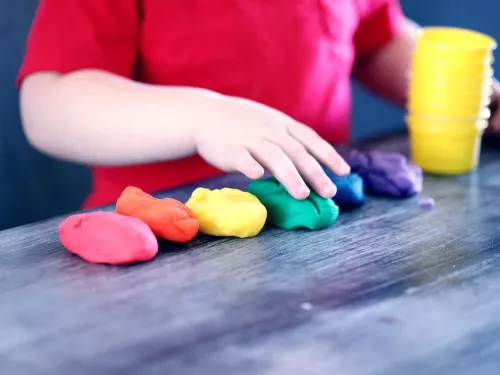Mastering phonics is vital for older students struggling with reading and spelling. This blog post will explore advanced phonics strategies designed specifically for older students to help them improve their literacy skills. Older students can enhance their decoding abilities and become more confident in their reading and writing by focusing on phonemic awareness, vowel patterns, consonant blends, and syllable division. These advanced phonics strategies will not only bridge any gaps in their phonics knowledge but also set them up for success academically and in their future careers. Stay tuned to discover valuable tips and techniques to support older students’ phonics journey.
Key Takeaways:
- Phonics is imperative for older students: Advanced phonics strategies are crucial for older students to enhance their reading and spelling skills.
- Focus on advanced phonemic awareness: Encouraging students to examine complex phonemic awareness activities can improve their decoding abilities.
- Use multisensory techniques: Incorporating techniques like visual, auditory, and kinesthetic approaches can help older students grasp advanced phonics concepts.
- Provide targeted practice: Tailoring phonics practice to address specific gaps in older students’ knowledge can lead to significant progress in their reading proficiency.
- Encourage application in reading and writing: Encouraging older students to apply advanced phonics strategies in their reading and writing tasks can help solidify their understanding and skill mastery.
Phonemic Awareness for The Older Student
Phonemic awareness is a crucial skill for older students to develop as it forms the foundation for advanced phonics skills. Despite their age, it is essential to address phonemic awareness in older students who may still struggle with decoding and spelling. Older students can improve their reading and writing abilities by focusing on phonemic awareness, leading to more tremendous academic success.
Assessment Strategies
Assessing phonemic awareness in older students can be done through various methods, including phoneme segmentation tasks, blending phonemes to form words, and identifying rhyming words. Observing students as they read aloud or spell words can also provide valuable insights into their phonemic awareness abilities. Diagnostic assessments designed for older students can help educators pinpoint areas of weakness and tailor intervention strategies accordingly.
Regular monitoring and individualised feedback arekey to effective assessment strategies for phonemic awareness in older students. This allows educators to track progress and adjust instruction as needed, ensuring that older students receive the support they need to develop strong phonemic awareness skills.
Targeted Activities to Build Phonemic Skills
When designing activities to build phonemic skills in older students, focusing on engaging and interactive tasks that cater to their maturity level is essential. Activities like word games, phoneme deletion exercises, and word manipulation tasks can help older students strengthen their phonemic awareness. Incorporating technology, such as phonics apps or online resources, can make learning more dynamic and appealing for older students.
Consistent practice with targeted phonemic awareness activities is necessary for older students to see improvements in their reading and spelling abilities. By incorporating these activities into regular literacy instruction, educators can help older students build a strong foundation in phonemic awareness and set them on the path to academic success.
Multisensory Approaches in Phonics Instruction
In teaching phonics to older students, implementing multisensory approaches can significantly enhance their learning experience. Students can interact with the material more profoundly by engaging multiple senses simultaneously to improve retention and understanding.
Visual Learning Techniques
Visual learning techniques play a crucial role in phonics instruction for older students. Utilising tools such as flashcards, word walls, and colour-coded charts can help students visually recognise letter-sound relationships and decode words more effectively. Additionally, incorporating multimedia resources like videos and interactive whiteboards can further enhance the visual learning experience.
Furthermore, visual learning techniques can be tailored to suit individual learning preferences, allowing students to engage with phonics in a way that resonates with them. This personalised approach can increase motivation and confidence in tackling phonics challenges.
Kinesthetic and Tactile Methods
Integrating kinesthetic and tactile methods into phonics instruction can provide older students a hands-on learning experience beyond traditional methods. Activities such as tracing letters in sand, using magnetic letters, and engaging in physical phonics games can help students develop muscle memory and strengthen their understanding of phonics concepts.
By incorporating kinesthetic and tactile methods, educators can cater to diverse learning styles and ensure that each student can learn phonics in an engaging and effective way. These methods make learning fun and interactive and have been shown to improve overall literacy skills in older students.
Differentiated Phonics Instruction for Diverse Learners
Differentiated phonics instruction is crucial when teaching older students with diverse learning needs. Tailoring teaching methods to suit individual learning styles can significantly enhance literacy development. This chapter will explore strategies for English Language Learners and discuss how to adapt phonics instruction for students with learning differences.
Strategies for English Language Learners
When teaching phonics to English Language Learners (ELLs), it is necessary to incorporate visual aids such as pictures, charts, and diagrams to reinforce phonetic concepts. Additionally, multisensory techniques like tactile materials and interactive activities can help ELLs grasp phonics skills more effectively. Providing opportunities for practice through games, partner activities, and repetition can also support language acquisition and phonics proficiency.
Adapting Instruction for Students with Learning Differences
For students with learning differences such as dyslexia, ADHD, or auditory processing disorder, adapting phonics instruction is necessary for their success. Breaking down phonics concepts into smaller, manageable parts can help these students grasp the material. Technology tools like audiobooks, speech-to-text software, and interactive learning apps can engage students with different learning styles and abilities.
Creating a supportive learning environment where students with learning differences feel empowered to ask for help and receive additional support as needed is essential. Educators can help these students overcome challenges and achieve phonics proficiency by providing personalised feedback and encouraging a growth mindset.
Technology and Phonics
As technology advances, it has become an invaluable tool for teaching phonics to older students. Using digital tools and resources, along with online phonics games, can engage students in interactive learning experiences that enhance their phonics skills in a fun and engaging way.
Digital Tools and Resources
Many digital tools and resources are available to support older students in their phonics learning journey. Interactive phonics apps, online phonics games, and digital flashcards can provide students additional practice decoding words, identifying letter sounds, and improving their reading skills. These tools can be accessed on various devices, making it easy for students to practise phonics in and out of the classroom.
Integrating Online Phonics Games into Curriculum
Integrating online phonics games into the curriculum can significantly enhance the learning experience for older students. Games that focus on blending sounds, segmenting words, and recognising phonetic patterns can help students develop their phonics skills dynamically and engagingly. Teachers can make phonics instruction more interactive and enjoyable by incorporating these games into lessons, improving literacy outcomes.
By integrating online phonics games into the curriculum, teachers can cater to different learning styles and keep older students motivated and engaged in phonics learning. These games provide immediate feedback, allowing students to track their progress and work towards mastering key phonics concepts in an enjoyable and rewarding manner.
Motivating Older Students in Phonics Mastery
As older students engage in phonics mastery, it is important to consider strategies to keep them motivated and engaged in the learning process. Phonics is crucial for developing reading and spelling skills, and by using specific techniques, educators can help older students excel in this area.
Cultivating an Engaging Learning Environment
Creating an engaging learning environment is critical to motivating older students to master phonics. Use resources such as interactive phonics apps, word games, and hands-on activities to make learning fun. Incorporating real-life examples and challenging tasks can stimulate interest and keep students actively involved in learning.
Furthermore, consider setting up group activities where students can collaborate and learn from each other. This fosters teamwork and communication skills and creates a supportive community where students feel encouraged to participate and learn together.
Positive Reinforcement and Progress Monitoring
Implementing positive reinforcement techniques and progress monitoring is vital in cultivating motivation for older students in phonics mastery. Offer rewards such as stickers, certificates, or praise for completing phonics tasks successfully. Break down larger goals into smaller, achievable milestones and track students’ progress regularly to celebrate their accomplishments.
By providing positive reinforcement and acknowledging their efforts, students will be inspired to continue working hard and improving their phonics skills. Progress monitoring allows educators to identify areas where students need additional support and tailor their teaching strategies to ensure continued growth and success.
Advanced Phonics Strategies for Older Students
Implementing advanced phonics strategies for older students is crucial in improving their reading and spelling skills. Older students can enhance their phonics knowledge and become more profit imulti syllabic using word sorts, syllabication rules, and decoding multisyllabic words. These strategies help students decode unfamiliar words and increase their overall fluency and comprehension. With consistent practice and guidance, older students can master advanced phonics skills and become confident and competent readers.
FAQ
Q: What are advanced phonics strategies for older students?
A: Advanced phonics strategies for older students involve teaching more complex phonics rules, such as diphthongs, silent letters, and advanced vowel patterns, to improve reading and spelling skills.
Q: Why are advanced phonics strategies important for older students?
A: Advanced phonics strategies help older students improve their decoding skills, enhance their vocabulary acquisition, and increase their reading fluency, leading to better overall literacy skills.
Q: How can advanced phonics strategies benefit older struggling readers?
A: Advanced phonics strategies provide struggling older readers the tools to decode unfamiliar words, improve their word recognition, and enhance their comprehension of more challenging texts.
Q: What are some examples of advanced phonics activities for older students?
A: Examples of advanced phonics activities include word sorts, syllable division exercises, decoding multisyllabic words, practising affixes and roots, and using context clues to infer meanings of multisyllabic.
Q: How can educators effectively implement advanced phonics strategies in the classroom for older students?
A: Educators can implement advanced phonics strategies by providing explicit instruction, offering targeted practice activities, using multisensory approaches, incorporating technology tools, and providing opportunities for real-world application of phonics skills.











